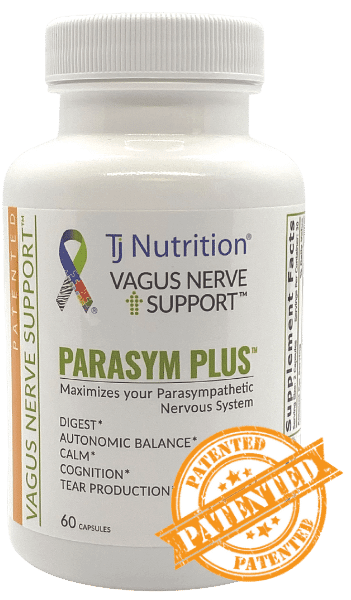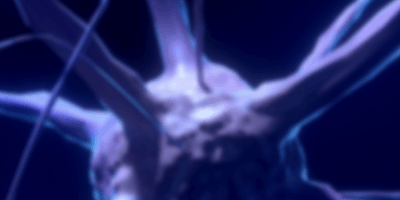Featured on Disabled World.
Synopsis:
Invisible disability expert Dr. Diana Driscoll discusses Postural Orthostatic Tachycardia Syndrome (POTS), Chronic Fatigue Syndrome (ME/CFS), vagus nerve disorders, Ehlers-Danlos syndrome (EDS), and similar invisible illnesses. (1)
Key Points:
Approximately 157 million Americans were afflicted with a chronic illness in 2020, and the US Census Bureau estimates 96% of chronic illnesses are invisible.
Invisible diseases can deliver debilitating chronic pain to sufferers, many of who struggle for answers.
Main Digest
Dr. Diana Driscoll is an invisible illness expert and authority on Postural Orthostatic Tachycardia Syndrome (POTS), Chronic Fatigue Syndrome (ME/CFS), vagus nerve disorders, Ehlers-Danlos syndrome (EDS), and similar invisible illnesses. She is the clinical director of POTS Care, the only clinic in the world treating POTS by treating the underlying medical cause(s) of POTS, and founder and president of Genetic Disease Investigators, an invisible illnesses research organization.
Clara
Clara suffers from debilitating pain. Everyday tasks are daunting and exhausting. She can’t concentrate or remember things. She can’t sleep and sometimes she can’t eat. Clara’s heart races just getting up from a chair. Sometimes she faints. Other times, she experiences hallucinations or diarrhea, her eyes feel dry, or she has problems focusing. Some days she feels better and thinks this is all behind her only to wake up to a new day feeling downright miserable. Her friends and family don’t believe she’s sick because she looks “normal.” Her co-workers doubt her absences are justified because she doesn’t rely on a cane or a wheelchair. Some doctors say her problems are psychological because her test results keep coming back negative. She is starting to doubt her own sanity, but deep down she knows she’s not crazy, and she knows something is terribly wrong with her body. Clara is clearly suffering from an “invisible illness”.

The US Department of Health and Human Services estimates that 157 million Americans were afflicted with a chronic illness in 2020, and the US Census Bureau estimates 96% of chronic illnesses are “invisible”. The Invisible Disabilities Association (formerly the Invisible Disabilities Advocate), an organization dedicated to raising awareness of invisible chronic illnesses and disabilities, defines invisible illnesses as any medical condition that is not outwardly visible to others, even to healthcare workers. They disproportionately affect women and encompass a broad range of conditions, including heart disease, diabetes, dementia, lupus, fibromyalgia, autoimmune disorders, even cancer. In Clara’s case, she was eventually diagnosed with Postural Orthostatic Tachycardia Syndrome (POTS). Despite the diagnosis and following the recommended treatment plan, her health continued to decline.
POTS is a type of dysautonomia, a dysfunction of the autonomic nervous system (ANS). The ANS automatically controls heart rate, blood pressure, gastrointestinal motility, and other automatic functions of the body. Dysfunction of the ANS can create symptoms of extreme fatigue, impaired thinking and concentrating (brain fog), weakness, tachycardia (fast heart rate), difficulty breathing, headaches, blurry vision, palpitations, tremors, and nausea, and more – all of which can be unpredictable. Researchers at Johns Hopkins Medicine found POTS affects an estimated one to three million Americans, is more common in women than men, and is more likely to develop in adolescents and young adults. Patients may have symptoms for months – or in Clara’s case years – before finally being accurately diagnosed.
POTS is traditionally treated with medications such as salt tablets, fludrocortisone, pyridostigmine, midodrine, antidepressants, and/or beta-blockers to help control symptoms. Researchers at the Cleveland Clinic also recommend patients wear thigh-high medical compression stockings and purchase a blood pressure monitor to check blood pressure and pulse. None of these are a cure, and none of these address the medical conditions that can lead to POTS.
Some patients with POTS develop Idiopathic Intracranial Hypertension (IIH), another poorly understood condition. It involves increased fluid pressure under the skull and can worsen POTS symptoms. IIH sufferers can experience headaches, visual disturbances, light sensitivity, neck pain, and sometimes tinnitus, nausea, and vomiting, and some experience visual impairment that can go unrecognized for months or even years. IIH does not cause POTS, but if IIH is left untreated, the patient will not recover from POTS. When cerebrospinal fluid collects at the top of the spine, at the cerebromedullary cistern, it can put pressure on the delicate and sensitive brain stem, which is the center of autonomic function. This gentle pressure can cause dramatic autonomic symptoms. When IIH is suspected, doctors typically look in the patient’s eyes to check for blurred optic nerve head margins (papilledema), but many patients with POTS do not display papilledema and the diagnosis is missed.
The gold standard for diagnosis of IIH still includes a lumbar puncture, aka spinal tap. Lumbar punctures are performed in the lower back, the lumbar region, wherein a needle is inserted between two vertebrae to remove a sample of cerebrospinal fluid. This is the fluid that surrounds the brain and spinal cord to protect them from injury. An opening pressure can be obtained, and if the fluid pressure is high, IIH can be confirmed. But lumbar punctures are not risk-free. They can be painful, they can induce Chiari malformation, a condition in which brain tissue extends into the spinal canal, and they are not accurate determinants of IIH in children. Importantly, if the patient’s intracranial pressure varies, an opening pressure may not capture episodically high intracranial pressure. And lumbar punctures cannot always be obtained, especially for patients with spinal stenosis or those who are severely dehydrated.
Hence, the Invisibility. There is more…
Some patients with POTS have a diagnosis of Ehlers-Danlos syndrome (EDS) with weak or stretchy connective tissue. Those patients have a high propensity to suffer from poor healing from the lumbar puncture, setting them up for chronic, secondary spinal leaks. Spontaneous or secondary intracranial hypotension (SIH) mimics IIH, and those affected can be disabled by the limited ability to function while upright. SIH is secondary to cerebrospinal fluid (CSF) leak at the level of the spine and the resulting loss of CSF volume that bathes the brain and spinal cord can cause dramatic symptoms. Yet the leak can be difficult to locate. The alternative to subjecting patients to the increased risk of lumbar punctures is to look for clues to abnormal intracranial pressure in the eyes and brain.
POTS patients should never be treated in the same, cookie-cutter fashion. No two patients are alike, and every case can be extraordinarily complicated. The former de facto treatment of salt-loading, blood volume expansion, vasoconstriction, beta-blockers, and antidepressants have the potential to not only mask the underlying medical problems, but they can also result in worsening the condition or can result in additional complications for the patient. As an example, a patient suffering from IIH will become worse if given a high salt diet and blood-volume expanding medications that increase intracranial pressure. It is far from a one size fits all situation; the specific course of treatment has real implications.
Regardless of the cause, recovery is only possible by first locating the underlying medical problems, then treating them in the safest manner possible. By treating only the symptoms, patients can be left to suffer unnecessarily, and worse, the diagnosis of an “invisible illness” provides no validation for the patient’s suffering.












